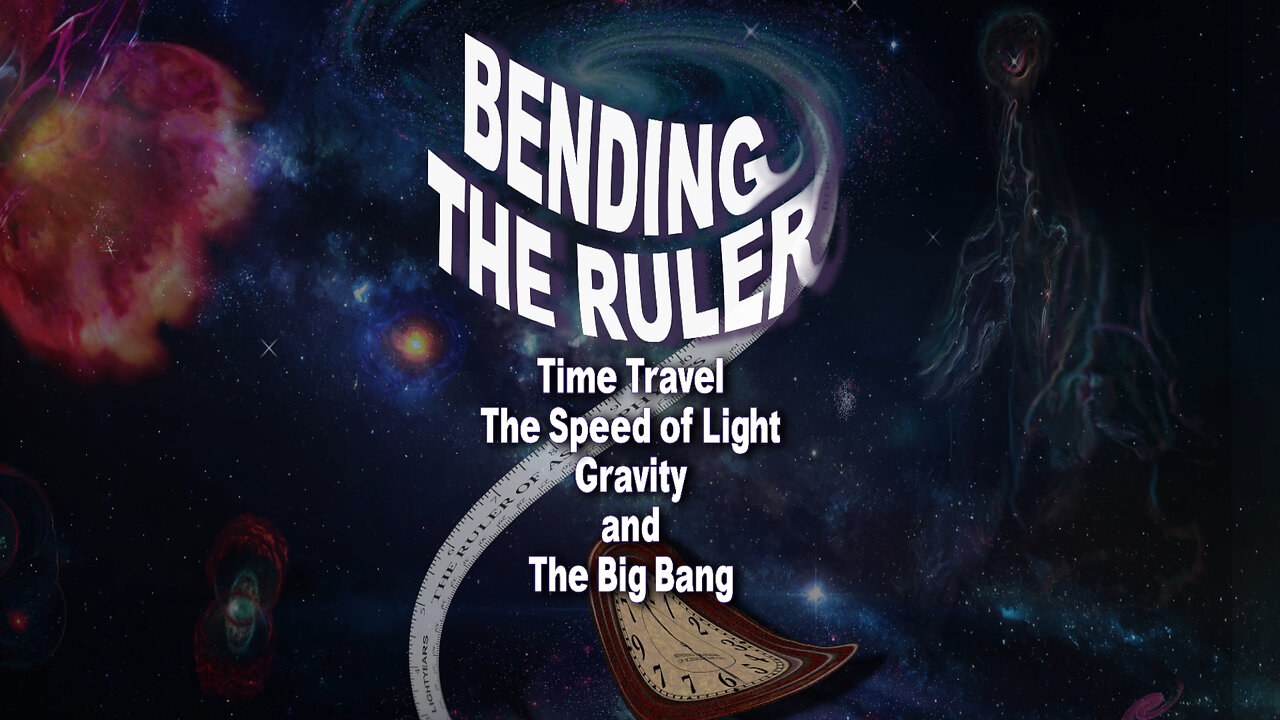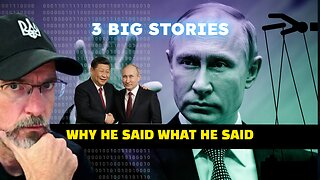Premium Only Content

Bending The Ruler - Time Travel, The Speed of Light, Gravity, and The Big Bang
Bending The Ruler - Time Travel, The Speed of Light, Gravity and The Big Bang
Challenge your assumptions and explore alternative theories of everything
#short #bigbang #gravity #timetravel #thespeedoflight #thebigbang #bendingtheruler
Bending The Ruler - Time Travel, The Speed of Light, Gravity, and The Big Bang
https://www.amazon.com/Bending-Ruler-Travel-Speed-Gravity/dp/0989331881
Thank You God - Finding Gratitude in Hard Times
https://www.amazon.com/Thank-You-God-Finding-Gratitude/dp/0989331873
The Science Of God Volume 1 - The First Four Days
https://www.amazon.com/Science-God-First-Four-Days/dp/1956814248
The Science Of God Volume 2 - Gravity, Land, Seas, and Evolution of Plant
https://www.amazon.com/Science-God-Gravity-Evolution-Plants/dp/1956814264
The Science Of God Volume 3 - Day Five and Day Six - The Creatures - Revolution or Evolution
https://www.amazon.com/Science-God-Creatures-Revolution-Evolution/dp/1956814280
The Science Of God Volume 4 - Day Six - Evolution versus Man - In Our Image
https://www.amazon.com/Science-God-Evolution-versus-Image/dp/B0CHL7DLBR
The Science Of God Volume 5 - Boats, Floods, and Noah - The Deluge
https://www.amazon.com/Science-God-Boats-Floods-Deluge/dp/B0CJDF9Z66
The Big Bang theory and redshift interpretation have long been accepted pillars of modern cosmology. However, increasing numbers of scientists and researchers are beginning to question the accuracy and assumptions behind these models. We explore the major failures of the Big Bang theory and problems with redshift interpretation that are forcing many to reconsider our understanding of the universe.
One of the most cited failures of the Big Bang theory is the horizon problem. According to the theory, different regions of the universe should not have had enough time to exchange information or energy, yet the cosmic microwave background (CMB) radiation is remarkably uniform in all directions. To fix this, cosmologists introduced inflation theory, an untestable idea that space itself expanded faster than the speed of light. But rather than solving the problem, inflation raises even more questions and adds complexity to the model.
The Big Bang theory predicts a universe that should have quickly curved into either a “closed” or “open” geometry. Instead, observations show a flat universe, balanced on a knife’s edge. This incredible fine-tuning is considered statistically improbable without some unknown mechanism or tuning—again, inflation is used to “patch” this inconsistency.
The Big Bang model heavily relies on dark matter and dark energy—mysterious substances that have never been directly observed. Combined, they make up about 95% of the universe under the standard model, yet no conclusive evidence exists for their physical properties. Critics argue this is akin to inventing unseen forces to keep a flawed theory alive, rather than admitting the model may need revision.
Redshift is the idea that galaxies moving away from us shift light toward the red end of the spectrum—is the cornerstone of the expanding universe theory. But this interpretation assumes redshift is caused only by motion (Doppler effect or cosmological expansion). Alternative theories like tired light, intrinsic redshift, or plasma cosmology suggest that redshift might result from other mechanisms, such as interaction with intergalactic matter.
Notably, Halton Arp, a prominent astronomer, documented cases of high-redshift quasars physically connected to low-redshift galaxies, directly contradicting the standard redshift-distance relationship. These findings have been largely dismissed by mainstream cosmology but continue to spark debate.
The Big Bang predicts matter and antimatter should have been created in equal amounts. Yet the observable universe contains almost no antimatter. Where did it go? The lack of a compelling explanation remains a major unresolved issue.
While the Big Bang theory and redshift remain central to cosmology, there are growing concerns and evidence pointing to serious theoretical failures. Whether due to fine-tuning, reliance on unobservable entities, or conflicting observations, many scientists argue it's time to re-examine our cosmological models.
This book looks at other views in a simplified language for most everyone to understand.
-
 19:57
19:57
Professor Gerdes Explains 🇺🇦
2 hours agoDecoding Putin's Shanghai Narrative: The Strategic Goal Behind the Lies
61 -
 1:16:16
1:16:16
vivafrei
3 hours agoTrans Violence Canadian Media is IGNORING! Activist Judge vs. Trump AGAIN! Ostrche Update & MORE!
39.8K28 -
 LIVE
LIVE
The HotSeat
1 hour ago👉 America’s Sex Drought: The Death of Real Men
685 watching -
![[Ep 739] Back to School Indoctrination | Dems Devalue Life | Covid Vax | Sam Anthony - [your]NEWS](https://1a-1791.com/video/fww1/79/s8/1/s/D/C/e/sDCez.0kob.1-small-Ep-739-Back-to-School-Indoc.jpg) LIVE
LIVE
The Nunn Report - w/ Dan Nunn
1 hour ago[Ep 739] Back to School Indoctrination | Dems Devalue Life | Covid Vax | Sam Anthony - [your]NEWS
135 watching -
![Special Guest Patrick Byrne Breaks Down President Trump’s Massive Announcement [EP4701]](https://1a-1791.com/video/fww1/f5/s8/1/y/_/C/e/y_Cez.0kob.3-small-Special-Guest-Patrick-Byrne.jpg) LIVE
LIVE
The Pete Santilli Show
1 hour agoSpecial Guest Patrick Byrne Breaks Down President Trump’s Massive Announcement [EP4701]
212 watching -
 LIVE
LIVE
The Tom Renz Show
1 hour agoIs Trump Finally Waking Up On the mRNA COVID Jabs?
217 watching -
 57:41
57:41
Futures Edge: Finance Unfiltered with Jim Iuorio and Bob Iaccino
1 hour ago $0.27 earnedLIVE Technical Analysis with Mike Arnold
4.13K -
 3:47:18
3:47:18
Right Side Broadcasting Network
8 hours agoLIVE REPLAY: President Trump Makes an Announcement - 9/2/25
225K69 -
 1:31:39
1:31:39
The Quartering
3 hours agoAlex Jones Goes To WAR With Owen Shroyer, Are All Women Terrible?, Woke Backfire Of The Year!
88.8K31 -
 55:54
55:54
The White House
7 hours agoPresident Trump Makes an Announcement, Sep. 2, 2025
23K26